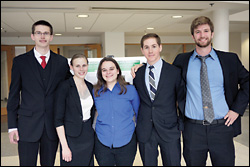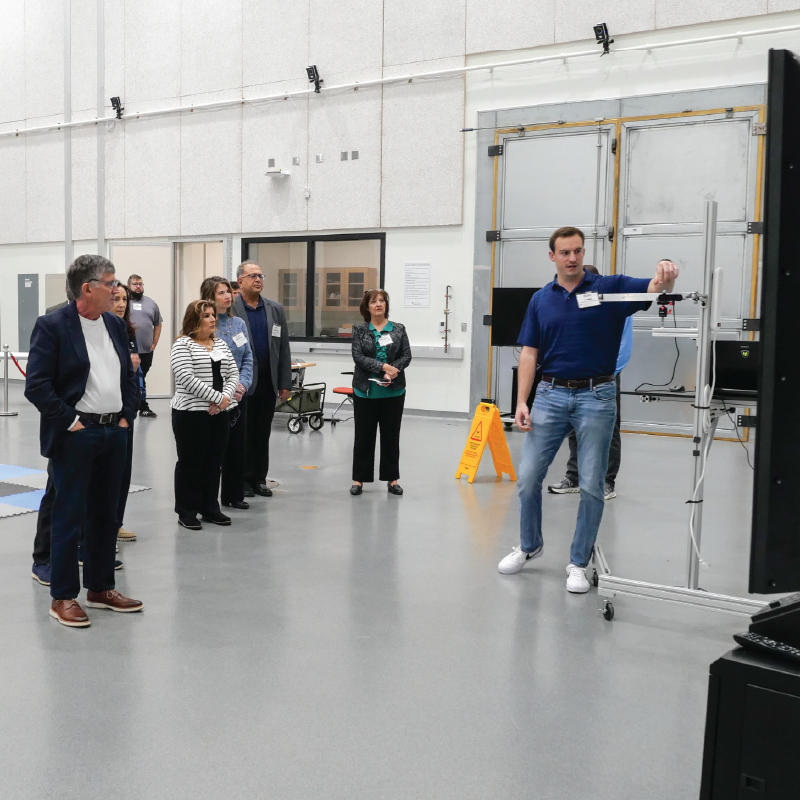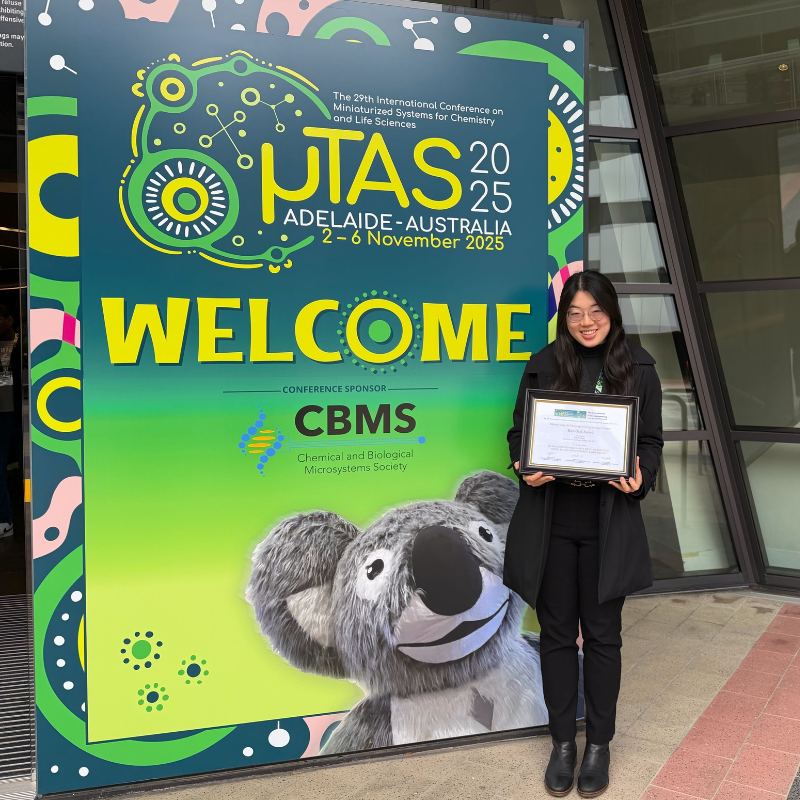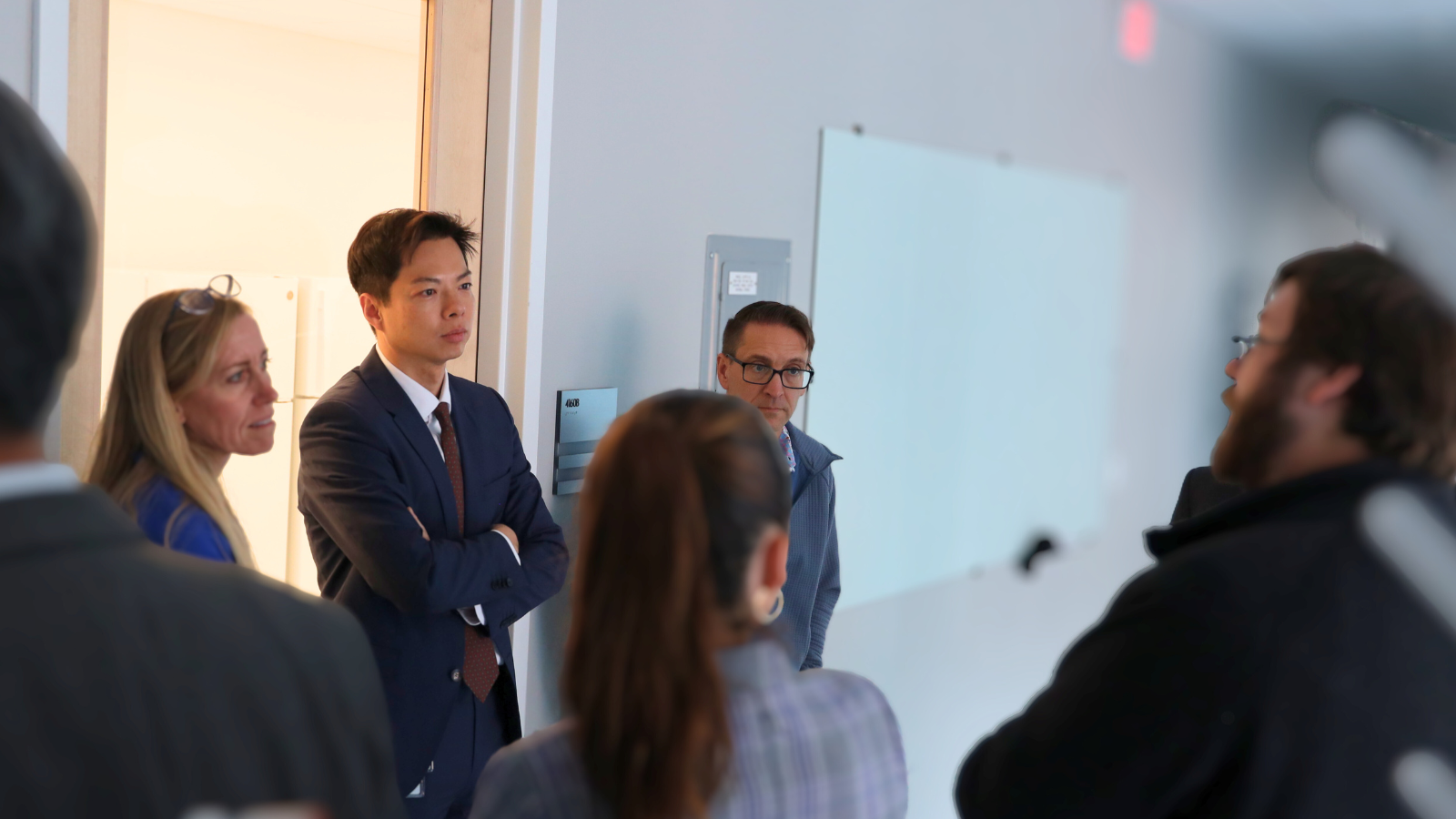News Story
Students' Improved Kevlar Soft Body Armor Wins National Design Competition

Left, to right: The creators of the improved Kevlar, Department of Materials Science and Engineering alumni Steven Lacey, Calisa Hymas, Kathleen Rohrbach, Samm Gillard, and Chris Berkey (all B.S. '14).
Specially modified ballistic grade Kevlar that could decrease the thickness and increase the strength of soft body armor took first place in the 2014 national ASM International Undergraduate Design Competition. The material, which has double the ballistic resistance of the original product, was created by a team of University of Maryland students from the Department of Materials Science and Engineering (MSE) for their senior capstone design project.
Although the soft body armor used by soldiers and law enforcement officers helps protect the wearer from projectiles, it often requires so many layers of Kevlar to be effective that it loses flexibility. MSE students Chris Berkey, Samm Gillard, Calisa Hymas, Steven Lacey, and Kathleen Rohrbach (all B.S. ’14) set out to double Kevlar’s tensile strength, decreasing the number of layers required for a bulletproof vest from 30 to 15. Their goal was to make it possible to create a lighter piece of body armor that gives the user more maneuverability without sacrificing safety.
The students modified ballistic grade Kevlar 29 by embedding a network of crosslinked, functionalized carbon nanotubes (CNTs), using a chemical process that included etching, soaking and curing the fabric. CNTs have many unusual properties, including their strength: despite being one-thousandth the width of a human hair, they are up to 100 times stronger than steel at only 1/6 the weight. The students theorized that the effective combination of the two materials would result in the product they were looking for.
In this video, the MSE seniors explain the chemistry, production process, simulations and ballistics testing behind their improved Kevlar.
After creating a prototype of its vest material, the team submitted it to the U.S. Army Research Laboratory (ARL) at the Aberdeen Proving Grounds for ballistics testing. The ARL team fired rounds of small ammunition into the samples in a controlled environment that adhered to the National Institute of Justice’s standards for testing equipment used by law enforcement agencies. They recorded how many layers of fabric the bullets penetrated and the depth of the backface deformation (what happens on the inside of the vest, facing the wearer).
Over multiple tests, the modified Kevlar 29 stopped a bullet on the second or third of its 15 layers, and had a deformation of 14.23–20.2mm. Its ballistic resistance had doubled, and its tensile strength was increased by 400 percent.

The Kevlar Soft Body Armor team receiving the ASM International Undergraduate Design award at the ASM Leadership Awards Luncheon.
ASM International awarded the team members $2000 and a travel grant to attend the society’s Materials Science & Technology conference, where they were honored at the ASM Leadership Awards Luncheon. MSE will receive $500 to support the efforts of future student design teams.
Published September 10, 2014









